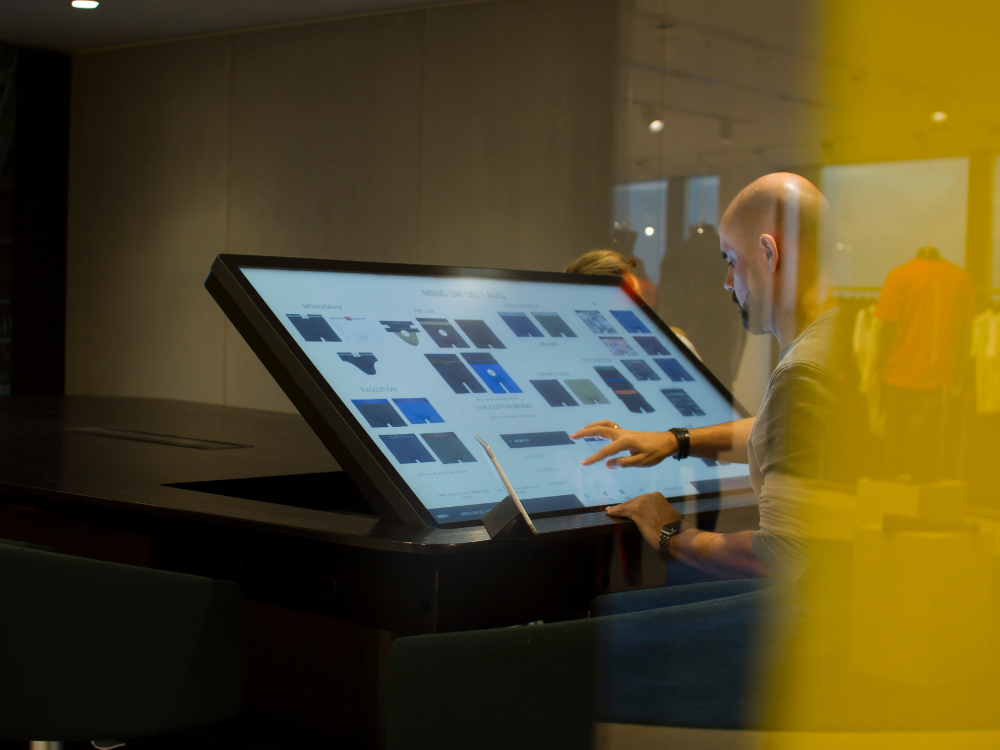Some fashion brands are winning the B2B game. This is how.
The way consumers buy has completely changed in the last 2 years. The omnichannel dream the fashion industry has been chasing for ages was struck by a drastic change in consumer purchasing habits. We haven’t just changed what we buy, but how and where we do it. From loungewear to activewear, brands fight for the attention of consumers with stories and products in the over-saturated virtual world. One starts to wonder, what is relevant anymore?
Better Sales is a mindset
As we live more and more in the digital world, fashion brands have turned to digital channels to find demand and balance the lack of footfall in retail stores across the world. Big-named brands like Nike or Adidas have the brand power to change sales channels without losing consumer demand, even growing it. However, not every brand is finding the success they expected in direct sales, despite the reprioritization. Shifting channels may require something more than just economic resources, but what is it?
What fashion is experiencing isn’t a channel shift, but a full shakeout. There's a disruption in consumer perception, purchasing behavior, and supply chain processes like never seen before.
Here are some ideas on wholesale strategies that fashion brands can adapt to turn the tide in their favor.Can fashion brands drive better sales in every channel, including wholesale?
#1 Make collaboration a core competency
For better B2B sales, start by looking into your seasonal calendar. The earlier relevant teams are involved, the better decisions are made. The biggest advantage of modern sales teams is how well connected they are with the rest of their organization. Instead of running solo, sales teams are just one of many teams involved in the B2B sales process. These fashion companies understand sales is everyone’s responsibility. They create space for cross-collaboration, fostering relationships, and driving digitization that fosters this collaboration beyond the actual sales appointment.
Digitization should be seen as a means to enhance collaboration, not to remove internal interactions. Traditional organizations see their value chain as a linear process with each team fulfilling a specific role. In contrast, modern fashion brands expect all teams to work together throughout the seasonal calendar. This creates a continuous loop of input/feedback/output that translates into better collections in less time.
#2 Focus on crafting your story first, then your collection
Fashion and trends. Trends and Fashion. What consumers want or may want drives most of the decision-making process in creating collections. More often than not, how designers create collections isn’t always reflected in the sales narrative. Traditional sales focus their performance on volume and not on the story, potentially leaving relevant details out of their sales conversations. Products without a story to tell are one reason less for customers and consumers to buy them. In order to drive better sales, organizations must craft the story as much as their product. Merchandising should be done at a brand level first before making decisions on a category level. Building a solid hierarchy with a clear message on each level helps sales teams and buyers to engage and align. The better your story is told, the better your collection is sold.
#3 Educate and inspire customers
Consumers care more than ever about how companies work: where fabrics are sourced, the welfare of their workers, and how much waste they generate. Education is key to win the market and for B2B brands, education should start with customers. Those who educate the market, win the market. Everyone can make sneakers, but not everyone can inspire and train people to run faster and more often.
Education is key to win the market. In B2B, education should start with customers, not end consumers.
#4 Data should have no boundaries: Share it
Digital sits at the heart of data-driven B2B sales teams. Finding the right digital solution is an exercise of breaking silos, not strengthening them. This means using digital products that help you leverage your data to make better decisions faster and more efficiently. If data isn't available, opinions will drive decision-making and successful fashion brands know this. For brands to drive better sales, data must be a part of the process. Many brands fail to provide a true omnichannel experience because data can't be shared. If digital enables collaboration, then collaboration should be measured in terms of data flow and transparency across the organization.
All-in-one solutions can be tempting, but all systems have to be connected to another system at some point. How well data flows will determine how adaptive and effective your sales decisions are.
#5 Optimize to Scale, don’t Scale to Optimize
Optimization is the oil that keeps B2B sales teams and modern fashion brands selling better. These teams and organizations usually have a digital mindset and approach their growth as a sequence of steps that help a company grow sustainably. While revenue is important, so is understanding the costs of your revenue. Overlooking costs when revenue increases is a risky strategy with dangerous long-term challenges.
Revenue is important, but so is understanding
the costs of revenue.
Optimization can happen at any point of your sales journey, no matter how big or small your organization is. Even if you’ve reached scale without optimization in focus, doing so then can protect your company’s margins and set the foundation for further growth. Effective optimization follows this 3-step approach:
- Outline your current processes to understand what it takes to service your B2B customers.
- Measure the quality of your process. B2B Sales KPIs can help you measure and track future improvements.
- Identify gaps and set optimization targets around them. Targets should be measurable and progress should be communicated to all teams.
Better Sales is More than Just Sales
Modern B2B sales have one thing in common: digital is their engine. However, Digitization is more than implementing new technologies. True digitization unlocks new ways of thinking. It prioritizes “how we sell” over “what we sell” and encourages companies to collaborate better. It brings focus to the things that really matter. It enhances people and interactions. If digital is the engine of modern B2B sales, then salespeople are the heart.







